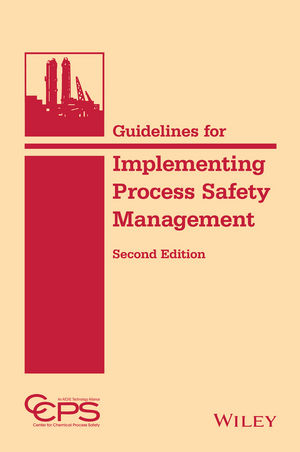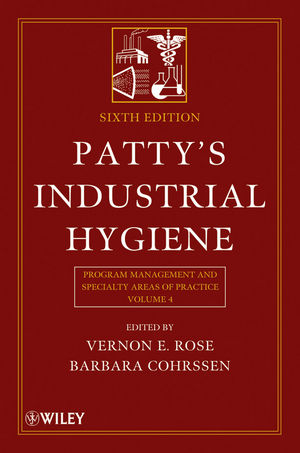
Most EHS guidelines or programs have local or regional origins, some later to evolve into global best practice models. The evolution is accelerated these days by the rapid sharing of information. Here are several examples:
- New York City’s 1993 Guidelines on the Assessment and Remediation of Fungi in Indoor Environments (http://www.nyc.gov/html/doh/html/epi/moldrpt1.shtml) now form the basis for best practice, with global recognition, in the identification and control of mold;
- British Standards Institution’s BS OHSAS 18001:1999 (Occupational Health and Safety Management System) (http://www.bsi-global.com/en/Assessment-and-certification-services/management-systems/Standards-and-Schemes/BSOHSAS-18001/) has been adopted in more than 80 countries and by 16,000 organizations (2005 figures);
- Washington State Department of Labor and Industries 2005 ergonomic evaluation tools, including lifting calculator, caution zone checklist and hazard zone checklist (http://www.lni.wa.gov/Safety/Topics/Ergonomics/ServicesResources/Tools/default.asp) have evolved as a best practice far outside their state; and,
- DuPont and Environmental Defense’s 2007 Nanomaterials Framework (http://www.nanoriskframework.com/page.cfm?tagID=1095), developed to address organizational needs, is a current global best practice in the safe handling of nanomaterials.
Will it become a best practice?
When you are not very familiar with a topic, look for these clues to determine if a guideline is/will become a best practice:- The more often we see a guideline cited by others, the greater confidence we may have that it is/will become a best practice. New York City’s mold control guidelines are an example.
- The more users of a guideline, the more likely it is/will become a best practice. BS OHSAS 181001 is an example.
- Guidelines established by authorities to address a regulatory need usually fit the profile of a best practice. Washington State’s ergonomic evaluation tools are an example.
- When contributors to a guideline include those that have varied, and even often competing interests, the more likely it is/will become a best practice. DuPont and Environmental Defense (environmental advocate) Nanomaterials Framework is an example.
Rank this
Rank this guideline: In 2002, major organizations published guidelines on reproductive health policy and programs at the workplace. Contributors included organizations similar to OSHA and NIOSH, representatives from universities, nurses unions, manufacturer associations, employer associations, medical associations, and companies such as Exxon Mobil. You can view these guidelines athttp://dosh.mohr.gov.my/koperat/G-PANDUAN%20PDF/GUIDE-Reproductive%203-02%20(I).pdf. Using the clues above, these guidelines are heavily favored as a best practice.What’s your reaction to the fact that these guidelines come from Malaysia? I’ve seen faces light up with anticipation of some reward when these guidelines are initially introduced. As soon as the word “Malaysia” comes out, looks of disappointment among U.S. EHS pros often follow.
Will you make the jump?
Some people want to cut off the discussion right there. EHS pros must “get over it” — and jump bias hurdles. Will you make the jump? You need to if you truly want to encourage better safety and health at your workplace; especially if you don’t have equivalent reproductive health guidelines that are being followed at your workplace now.Now, more than ever before, EHS professionals “get over it” — jump bias hurdles and consider best practice guidelines wherever they come from. And remember, you don’t have to follow any guideline step-by-step; take a best practice and customize it to your needs.
Continuous improvement
Malaysia didn’t develop its reproductive guidelines out of the blue. Malaysia’s 2002 guidelines improved upon similar guidelines developed by the Commission of the European Communities in 2000; which now form the basis for law in European Union countries. Improvements Malaysia made upon the EU guidelines include adding a “List of Occupational Reproductive Health Hazards to Male Employees.” The EU guidelines only address workers who are pregnant, may become pregnant, or are breastfeeding.Best practices are always under consideration for improvement. For example, BS OHSAS 18001:2007 was improved from the first edition published in 1999. A key change: “The importance of ‘health’ has now been given greater emphasis.” If you recognized deficiencies in the 1999 version of OHSAS 18001, you could have tweaked it to meet your needs then, rather than wait for the improved 2007 version.

You’ve got the whole world in your hands thanks to the Internet.
Global similarities
When you look closely, you begin to find little difference in best practices globally. Malaysia’s and EU’s reproductive guidelines, although greatly expanded, closely align with the occupational reproductive health guidelines developed in 1996 by the American College of Occupational and Environmental Medicine.Consider various safety and health management systems such as ANSI Z10 (2005), OSHA’s Voluntary Protection Program, OHSAS 18001:2007, and ILO-OSH:2001. There is only about five percent difference between them all. OHSAS 18001:2007 clarifies this point with its Annex B, stating “no areas of significant difference have been identified” between the ILO-OSH (International Labour Organization’s) guidelines.
With such closeness in similarities among safety and health best practices globally, which do you choose? Numerous arguments can be made for the top choice. The most important decision, however, is to choose something over nothing. Then tweak to meet your needs. Finding safety and health best practices, even in far flung places, is easy today because of expanding Internet search capabilities. Bottom line: best practice guidelines on emerging health issues, management standards, and so on allow you to develop and measure leading indicators and seek continual improvement toward a zero defect environment.



